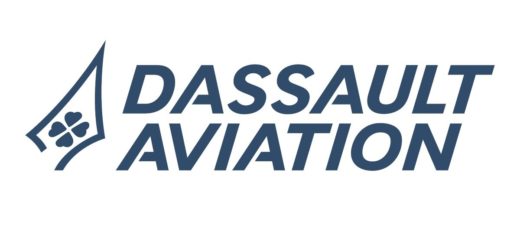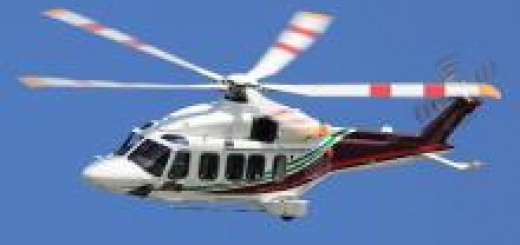UK and Ukraine Agree to Jointly Produce Thousands of Octopus-100 Interceptor Combat Drones
{loadposition bannertop}
{loadposition sidebarpub}
Ukraine and the United Kingdom have signed an agreement to co-produce thousands of Octopus-100 interceptor drones under the “Build with Ukraine” initiative. The move marks the first serial production of a Ukrainian combat drone in a NATO country, deepening defense-industrial ties and accelerating delivery to the front lines.
On 25 October 2025, Ukraine and the United Kingdom confirmed a new phase of cooperation with an agreement between the two countries’ ministries of defense to jointly produce thousands of Octopus-100 interceptor drones, as announced by Rustem Umerov, Secretary of the National Security and Defense Council of Ukraine, with manufacturing to take place in the UK under the “Build with Ukraine” program. Signed in London, the accords elevate an already close defense relationship into co-manufacturing on NATO soil and would make the Octopus-100 the first Ukrainian combat drone to be serially produced in a NATO country, signaling a shift from ad hoc procurement to a structured industrial partnership. For Kyiv, the arrangement promises faster fielding and sustained replenishment; for London, it embeds the UK as a production hub for systems destined for Ukrainian defense and evaluation. The announcement follows recent high-level attention on the platform after President Volodymyr Zelensky showcased the Octopus interceptor to UK Prime Minister Keir Starmer, underscoring the program’s political and operational relevance.
Follow Army Recognition on Google News at this link
The Octopus-100 is presented as an interceptor-class drone, a category conceived to counter hostile unmanned threats and protect critical assets (Picture Source: Office of the President of Ukraine)
The Octopus-100 is presented as an interceptor-class drone, a category conceived to counter hostile unmanned threats and protect critical assets. While specific technical parameters were not disclosed in the information provided, the designation and framing indicate a platform optimized for rapidly engaging aerial targets in contested environments. The manufacturing objective, thousands of units, implies a design philosophy favoring producibility, modularity, and a supply chain that can scale under wartime constraints. The production plan embedded in a NATO country also suggests an emphasis on quality assurance, standardized processes, and streamlined certification pathways aligned with allied practices.
Operationally, the Octopus-100 has entered the spotlight through leadership-level demonstrations, with the United Kingdom preparing to manufacture units for further testing in Ukraine. This sequencing, political endorsement, industrial agreement, and iterative in-theater trials, reflects a development procedure tailored to Ukraine’s urgent needs: deploying sufficient quantities for operational assessment while maturing tactics, techniques, and procedures. Such a cycle enables rapid user feedback, accelerates upgrades, and builds a doctrine around interceptor drones that can be standardized across units. The London production framework should also support logistics predictability, enabling scheduled deliveries, spare parts planning, and training pipelines anchored in UK-Ukrainian collaboration.
Several advantages stem from this arrangement. First, industrial dispersion enhances resilience: producing a Ukrainian combat drone in a NATO country mitigates risks from strikes on domestic manufacturing nodes and diversifies supply. Second, the scale, thousands of units, positions Octopus-100 as a mass-available tool for layered air defense against small unmanned systems, an area where speed of fielding often outweighs exquisite performance. Third, co-production formalizes technology transfer pathways and establishes interoperable standards, making it easier to maintain, refurbish, and iterate the fleet over time. Finally, the program’s visibility, including leadership demonstrations, can accelerate institutional buy-in and smooth budgetary decisions on both sides.
Strategically, the implications are notable. Geopolitically, shifting serial production of a Ukrainian combat drone into a NATO country signals to partners and adversaries that support for Ukraine is moving beyond donations toward integrated defense industrial cooperation. This deepens the UK–Ukraine security relationship and can catalyze additional allied participation under the Build with Ukraine banner, potentially extending to components, testing ranges, or joint training. Geostrategically, mass production of interceptor drones aligns with the operational reality of modern conflicts where attrition, electronic warfare, and the ubiquity of small drones demand affordable, numerous counter-systems. A reliable, NATO-based production line shortens replenishment cycles, improves sustainment under pressure, and supports Ukraine’s capacity to protect maneuver forces and critical infrastructure.
This announcement marks a tangible step from political commitment to industrial execution: a Ukrainian combat drone moving to serial manufacture within a NATO country, under a framework designed for scale and speed. By anchoring production in the United Kingdom and channeling units to Ukraine for iterative testing, both governments are establishing an agile pipeline for capability growth and sustained supply. With thousands of Octopus-100 interceptors slated for joint production, the partnership aims to harden Ukraine’s defenses against unmanned threats while laying the groundwork for broader allied involvement in Ukraine-centered defense manufacturing.
Written by Teoman S. Nicanci – Defense Analyst, Army Recognition Group
Teoman S. Nicanci holds degrees in Political Science, Comparative and International Politics, and International Relations and Diplomacy from leading Belgian universities, with research focused on Russian strategic behavior, defense technology, and modern warfare. He is a defense analyst at Army Recognition, specializing in the global defense industry, military armament, and emerging defense technologies.

{loadposition bannertop}
{loadposition sidebarpub}
Ukraine and the United Kingdom have signed an agreement to co-produce thousands of Octopus-100 interceptor drones under the “Build with Ukraine” initiative. The move marks the first serial production of a Ukrainian combat drone in a NATO country, deepening defense-industrial ties and accelerating delivery to the front lines.
On 25 October 2025, Ukraine and the United Kingdom confirmed a new phase of cooperation with an agreement between the two countries’ ministries of defense to jointly produce thousands of Octopus-100 interceptor drones, as announced by Rustem Umerov, Secretary of the National Security and Defense Council of Ukraine, with manufacturing to take place in the UK under the “Build with Ukraine” program. Signed in London, the accords elevate an already close defense relationship into co-manufacturing on NATO soil and would make the Octopus-100 the first Ukrainian combat drone to be serially produced in a NATO country, signaling a shift from ad hoc procurement to a structured industrial partnership. For Kyiv, the arrangement promises faster fielding and sustained replenishment; for London, it embeds the UK as a production hub for systems destined for Ukrainian defense and evaluation. The announcement follows recent high-level attention on the platform after President Volodymyr Zelensky showcased the Octopus interceptor to UK Prime Minister Keir Starmer, underscoring the program’s political and operational relevance.
The Octopus-100 is presented as an interceptor-class drone, a category conceived to counter hostile unmanned threats and protect critical assets (Picture Source: Office of the President of Ukraine)
The Octopus-100 is presented as an interceptor-class drone, a category conceived to counter hostile unmanned threats and protect critical assets. While specific technical parameters were not disclosed in the information provided, the designation and framing indicate a platform optimized for rapidly engaging aerial targets in contested environments. The manufacturing objective, thousands of units, implies a design philosophy favoring producibility, modularity, and a supply chain that can scale under wartime constraints. The production plan embedded in a NATO country also suggests an emphasis on quality assurance, standardized processes, and streamlined certification pathways aligned with allied practices.
Operationally, the Octopus-100 has entered the spotlight through leadership-level demonstrations, with the United Kingdom preparing to manufacture units for further testing in Ukraine. This sequencing, political endorsement, industrial agreement, and iterative in-theater trials, reflects a development procedure tailored to Ukraine’s urgent needs: deploying sufficient quantities for operational assessment while maturing tactics, techniques, and procedures. Such a cycle enables rapid user feedback, accelerates upgrades, and builds a doctrine around interceptor drones that can be standardized across units. The London production framework should also support logistics predictability, enabling scheduled deliveries, spare parts planning, and training pipelines anchored in UK-Ukrainian collaboration.
Several advantages stem from this arrangement. First, industrial dispersion enhances resilience: producing a Ukrainian combat drone in a NATO country mitigates risks from strikes on domestic manufacturing nodes and diversifies supply. Second, the scale, thousands of units, positions Octopus-100 as a mass-available tool for layered air defense against small unmanned systems, an area where speed of fielding often outweighs exquisite performance. Third, co-production formalizes technology transfer pathways and establishes interoperable standards, making it easier to maintain, refurbish, and iterate the fleet over time. Finally, the program’s visibility, including leadership demonstrations, can accelerate institutional buy-in and smooth budgetary decisions on both sides.
Strategically, the implications are notable. Geopolitically, shifting serial production of a Ukrainian combat drone into a NATO country signals to partners and adversaries that support for Ukraine is moving beyond donations toward integrated defense industrial cooperation. This deepens the UK–Ukraine security relationship and can catalyze additional allied participation under the Build with Ukraine banner, potentially extending to components, testing ranges, or joint training. Geostrategically, mass production of interceptor drones aligns with the operational reality of modern conflicts where attrition, electronic warfare, and the ubiquity of small drones demand affordable, numerous counter-systems. A reliable, NATO-based production line shortens replenishment cycles, improves sustainment under pressure, and supports Ukraine’s capacity to protect maneuver forces and critical infrastructure.
This announcement marks a tangible step from political commitment to industrial execution: a Ukrainian combat drone moving to serial manufacture within a NATO country, under a framework designed for scale and speed. By anchoring production in the United Kingdom and channeling units to Ukraine for iterative testing, both governments are establishing an agile pipeline for capability growth and sustained supply. With thousands of Octopus-100 interceptors slated for joint production, the partnership aims to harden Ukraine’s defenses against unmanned threats while laying the groundwork for broader allied involvement in Ukraine-centered defense manufacturing.
Written by Teoman S. Nicanci – Defense Analyst, Army Recognition Group
Teoman S. Nicanci holds degrees in Political Science, Comparative and International Politics, and International Relations and Diplomacy from leading Belgian universities, with research focused on Russian strategic behavior, defense technology, and modern warfare. He is a defense analyst at Army Recognition, specializing in the global defense industry, military armament, and emerging defense technologies.







